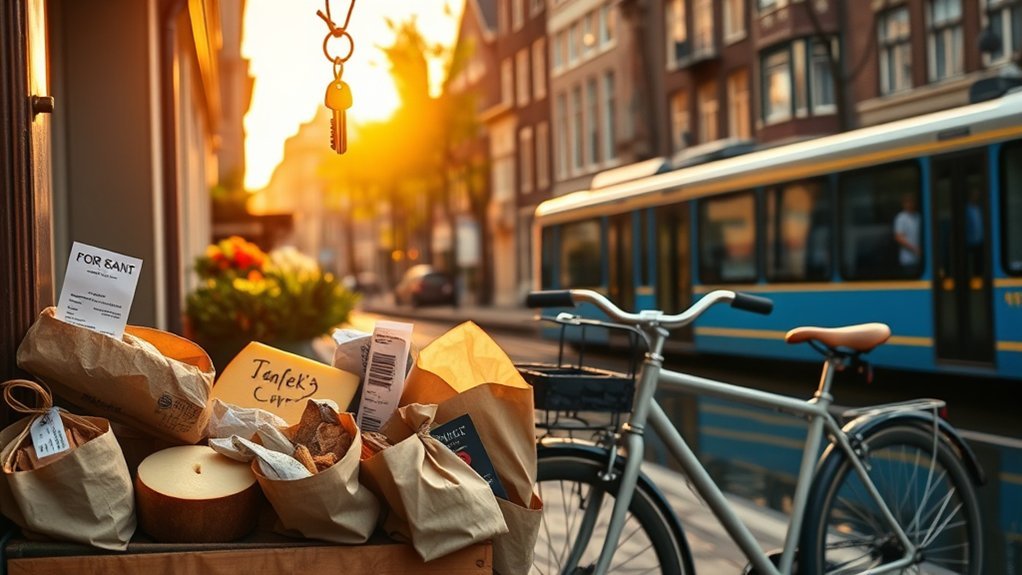You’ll typically need about €2,500–€3,000/month to live comfortably in Amsterdam, with rent the biggest cost driver—shared rooms €600–€900, studios ~€2,067 and one‑bed city‑centre ~€2,150. Expect utilities and internet €250–€300, groceries €350–€400 if you mostly cook, and a monthly transit pass €82–€100 (bikes cut short‑trip costs). Start apartment searches 2–3 months ahead, budget for deposits, and keep looking for cheaper neighbourhoods and options if you want to lower expenses.
Is Amsterdam Expensive? Overview of Living Costs
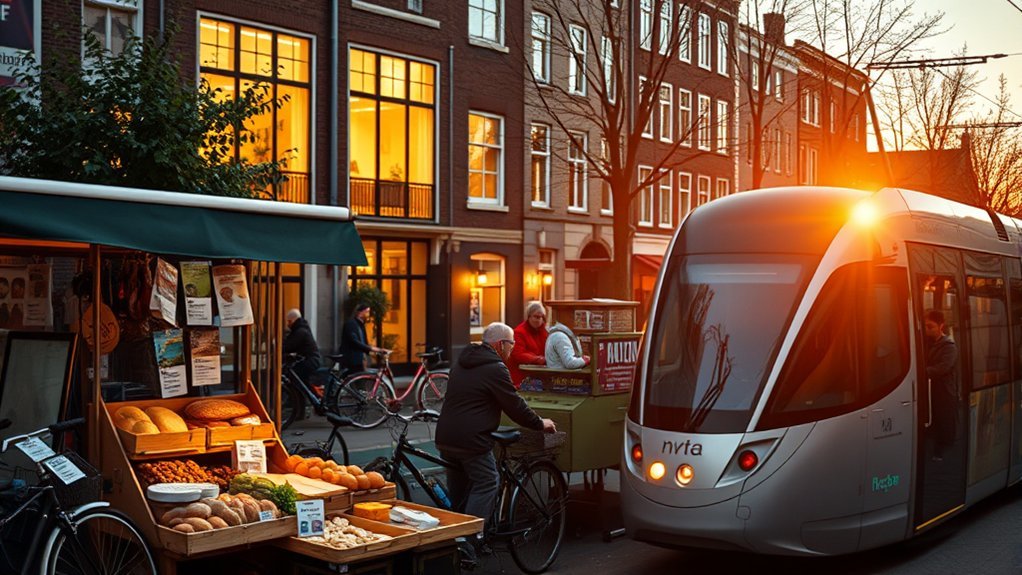
One quick way to judge Amsterdam’s cost is to look at typical monthly expenses: Numbeo ranks it the 15th most expensive European city, with a single person’s cost around €2,867.
You’ll find rent in Amsterdam drives most of that total: studios average €2,067 and one‑bed city‑centre apartments ~€2,150, while a room in a shared flat usually runs €600–€900, so shared flat options cut monthly rent in Amsterdam considerably.
Utilities and internet add roughly €250–€300, and many listings don’t include them, so budget accordingly.
Groceries cost about €350–€400 if you shop regularly, less if you use Lidl/Aldi or markets.
For transport, public transport is reliable — single tickets €3.40 and a GVB monthly pass is ~€82–€100 — but cycling (buying second‑hand €50–€150) is far cheaper.
Rent, Housing Market and How to Find an Apartment
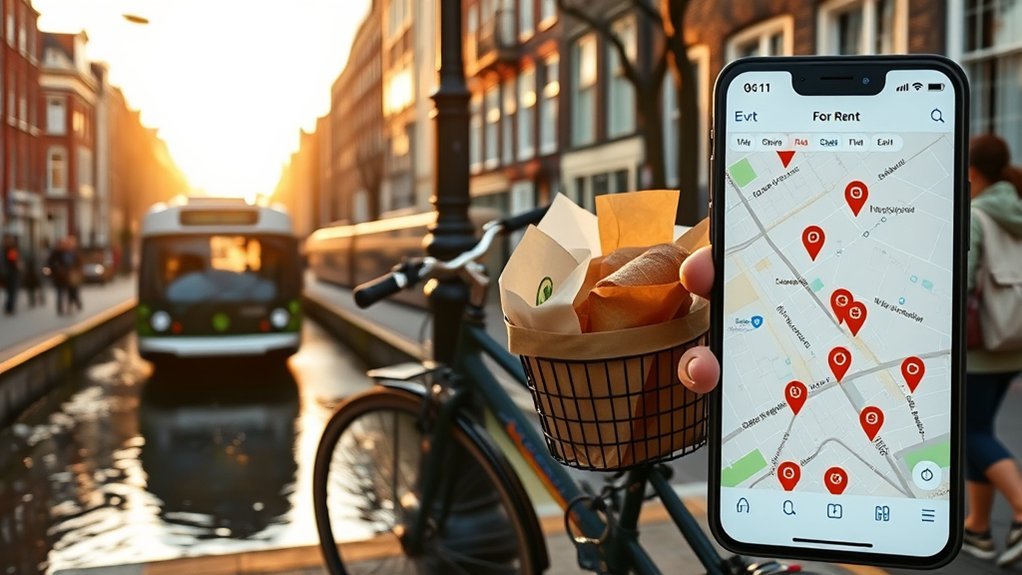
Finding a place to live in Amsterdam takes planning and speed: expect studios around €2,067/month and typical apartments about €2,490, while private rooms in shared flats usually run €600–€900 (higher in the centre).
Finding housing in Amsterdam needs speed: studios ~€2,067, typical apartments ~€2,490, rooms €600–€900 (centre pricier).
The housing market is competitive; start your search 2–3 months ahead, prepare documents (work contract, recent payslips, bank statements) and be ready to act fast.
Landlords often set income requirements of ~3–4× rent and request a one- to two-month rental deposit.
If you need time, opt for short-term furnished while hunting long-term.
- Use trusted search platforms: Pararius, Funda, HousingAnywhere, Homelike.
- Verify listings in person and watch for advance-payment scams.
- Expect unregulated private-market rental prices and competitive bidding.
- Consider neighbourhoods outside the city centre to lower average monthly rent.
- If buying, anticipate high prices (€≈9,493/m² centre) and possible leasehold ground-rent.
This data-driven approach helps you find an apartment efficiently and avoid common pitfalls. Additionally, understanding housing market trends in your area can significantly aid in determining fair rental prices.
Utilities, Internet and Communication Expenses
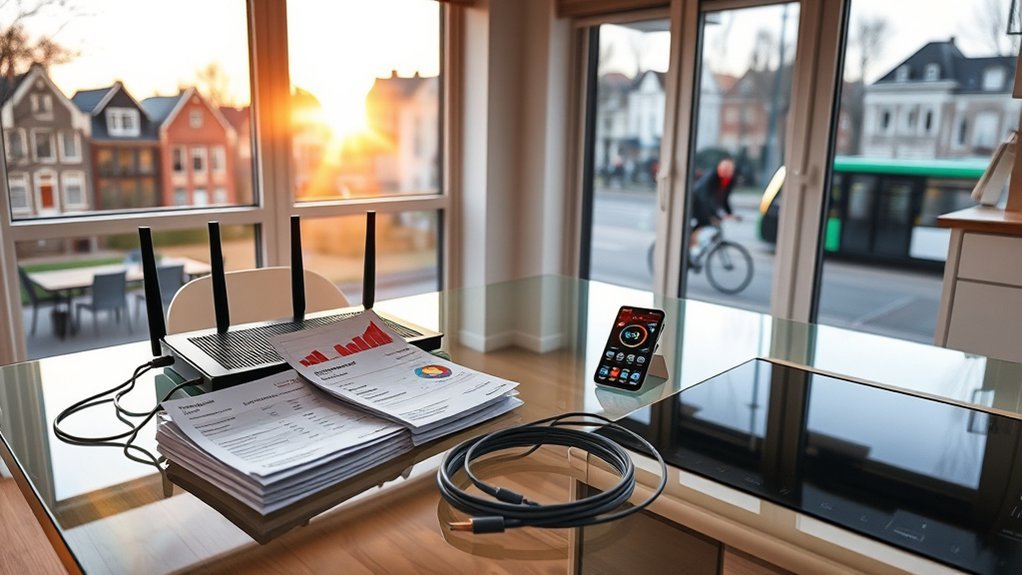
Expect to budget roughly €250–€254/month for basic utilities (electricity, heating, water, garbage) for an ~85 m² apartment, with internet adding about €44–€46/month for ≥60 Mbps and a mobile plan around €20–€22/month for unlimited calls and 10GB+ data. Those figures represent typical monthly bills you’ll see in Amsterdam: utility bills are dominated by electricity and heating, especially in winter when gas/electric combined spikes. Regular inspections of your appliances can help identify issues early and maintain efficiency.
Internet cost for a reliable cable or ADSL connection is stable; check contract length and installation fees. For mobile phone needs, a €20–€22 phone plan gets unlimited calls and ample data, but compare providers for promotions.
To lower total monthly bills, run appliances during cheaper electricity periods, lower thermostat settings slightly, and install a water meter so you pay by consumption. Regularly review invoices and switch providers if savings exceed switching costs. Tracking these categories—utilities, internet, mobile phone—helps you forecast fixed monthly living costs accurately.
Food, Groceries and Dining Out
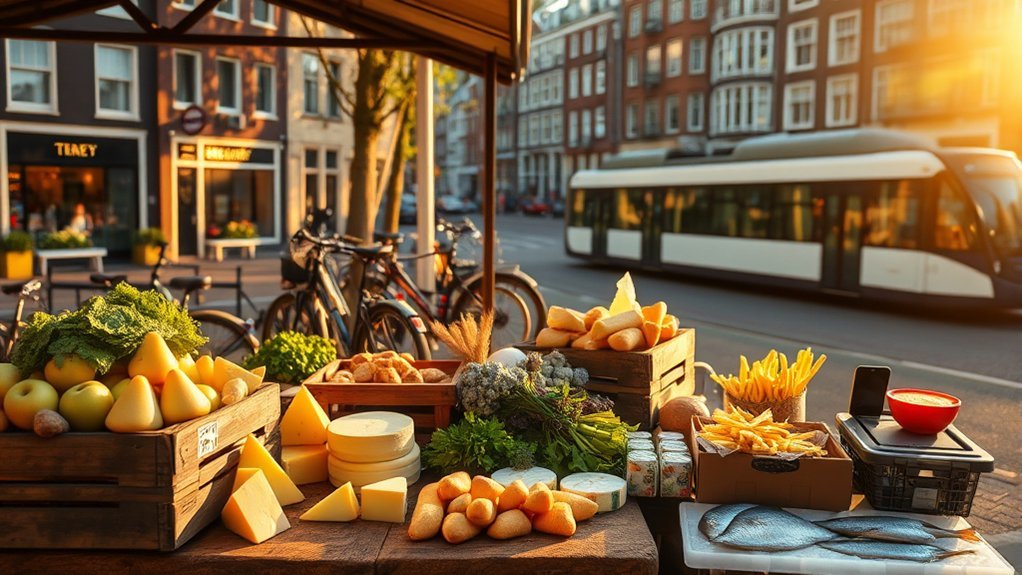
After you’ve accounted for utilities and comms, food will be the next big monthly variable to manage. Your monthly food budget will usually be €350–€400 if you mainly cook at home. Shopping at Lidl/Aldi or market stalls lowers the cost of food compared with Albert Heijn or Jumbo. Staples: milk €1.20–€1.50/L, bread price €1.70–€2.50 (500g), eggs €3.50–€4.50 (12), chicken €12–€13/kg, cheese €11–€12/kg.
- Groceries: choose Lidl/Aldi for basics, Albert Heijn for convenience and range.
- Market stalls: buy fruit, veg and bread cheaper and fresher.
- Take-away: expect €8–€12 for street food; café lunch €12–€15.
- Restaurant prices: mains €20–€30; dinner for two €45–€75 in mid-range spots.
- Drinks: coffee price €4–€5; draught beer €5–€6.
Practical tip: cooking at home and using markets cuts costs markedly versus frequent dining out in touristy areas. Additionally, being mindful of repair costs for kitchen appliances may help manage overall expenses.
Transport, Bikes and Getting Around
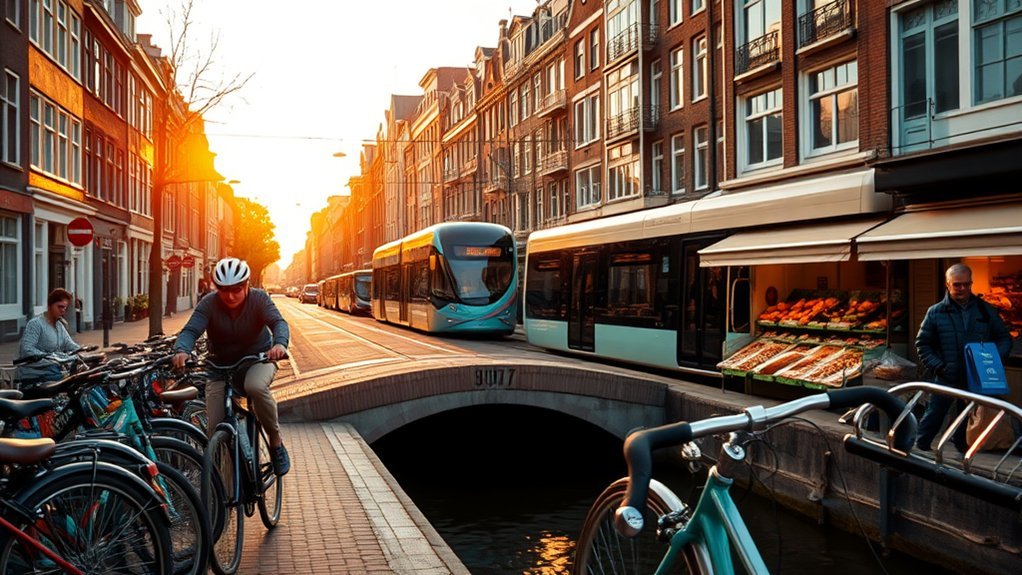
One of the smartest moves for getting around Amsterdam is to rely on bikes and public transport: a decent second‑hand bike runs €50–€150, new city bikes €250–€600 and e‑bikes €1,500–€3,000, while monthly GVB passes cost about €82–€100 for unlimited trams, buses and metro.
You’ll use an OV-chipkaart for trains, trams and buses; single GVB rides start at €3.40, a 1‑day card ≈€9 and train fares for regional trips (Amsterdam–Rotterdam) are typically €10–€18 one‑way.
For last‑mile hops OV-fiets rentals at stations cost about €4/24h (you need an OV-chipkaart). Long‑term bike rentals run €20–€30/month if you don’t buy a bike. The Schiphol train to Centraal is about €4.90.
Driving is costly: parking costs up to €5/hour and permits €60–€500/year, so most people skip cars.
Practical strategy: use a monthly pass for daily commuting, keep a cheap city bike or OV-fiets for short trips, and factor occasional train fares for intercity travel. Additionally, investing in a portable jump starter can save you from unexpected breakdowns while on the road.
Frequently Asked Questions
What Is the Average Cost of Living in Amsterdam?
You’ll pay roughly €2,800–€3,200/month typically; housing trends, seasonal expenses, utility breakdown, entertainment costs, healthcare fees, childcare expenses, pet ownership, nightlife prices, co working memberships, insurance premiums all influence that practical, data-driven estimate.
How Much Money Do I Need to Live Comfortably in Amsterdam?
You’ll need roughly €1,800–€3,000/month to live comfortably; factor visa requirements, part time jobs, healthcare access, language classes, coworking spaces, bicycle culture, nightlife spots, social clubs, weekend trips, and cultural festivals into your budget planning.
How Much Do Groceries Cost per Month in Amsterdam?
Think of your cart as a compass: you’ll spend about €350–€400/month groceries if you cook, using weekly markets, supermarket chains, budget shopping, meal planning, grocery apps, seasonal produce, organic groceries, specialty stores, international foods, cutting food waste.
Is It Expensive to Live in Amsterdam in US Dollars?
Yes — you’ll find Amsterdam costly in USD: housing market and utility bills drive expenses, while nightlife costs, entertainment expenses, coworking fees, language classes, childcare expenses, pet ownership, healthcare access and tax implications all raise your monthly budget.
Conclusion
So yes, Amsterdam will charm your wallet and your heart — rent bites, groceries nibble, and bike repairs politely demand tribute. You’ll pay for convenience: central apartments cost a premium, utilities and internet add predictable monthly sums, and transport is efficient (and cheaper if you pedal). Use data to budget realistically, hunt neighborhoods smartly, and embrace cycling to save. Cynical? Sure — but do it informed, practical, and with a stiff drink.

